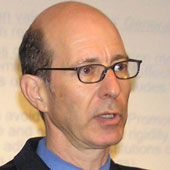Fed Needs to Rethink How to Tighten Monetary Policy
The Federal Reserve going about the process of tightening in the wrong way could have severe global repercussions.
September 12, 2016
After more than 7 years of economic recovery, the Federal Reserve is positioning itself to tighten monetary policy by raising interest rates.
In light of the wobbly reaction in financial markets, an important question that must be asked is whether raising interest rates is the right tool.
It could well be argued that the world’s leading central bank is going about the process of tightening in the wrong way. Owing to the dollar’s preeminent standing, that could have severe global repercussions.
Just as the Fed has had to rethink how it combats recessions, so too it must rethink how it transitions from an easy monetary policy stance to a tighter stance.
A quick review
In December 2015, the U.S. Federal Reserve increased interest rates for the first time in almost a decade. This move came with the expectation of gradually raising its interest rate to a new normal of 3%.
Initially, normalization aimed to lighten pressure on the monetary policy pedal, and only later would it turn to hitting the monetary policy brake.
The normalization process was contingent on the data showing continued improvement, but the U.S. economy slowed in the first half of 2016, putting it on hold.
However, since May, the data have again been robust regarding job creation and wage growth. Furthermore, there are signs of asset and house price exuberance in the U.S. economy that can be destabilizing and also inflict large future losses on working families.
These recent developments have prompted the Federal Reserve to consider restarting the process.
Raising interest rates is the wrong way
The problem is not that the Federal Reserve wants to restart the normalization process, but rather that it wants to do so by raising its policy interest rate. That risks spilling the infamous monetary policy “punch bowl.”
Raising interest rates is a dangerous step in today’s integrated global economy. The Fed must calculate especially carefully given that other economies (the UK, Japan and the EU) are on the ropes and lowering rates.
Raising U.S. rates in such an environment threatens to cause an inflow of hot money into the United States that will appreciate the dollar’s exchange rate and further fuel US financial markets.
That, in turn, will negatively impact manufacturing via lower exports and increased imports. It will also lower investment spending by injuring manufacturing. And it would further distort financial asset prices, setting them up for a possible disorderly correction.
Alternative normalization path
There is an alternative normalization policy path that avoids these problems.
1. The Federal Reserve should shelve plans to raise its policy interest rate. Later, if the normalization process goes well, it can put rate hikes back on the policy table.
2. The Federal Reserve should immediately stop reinvesting the income from its private sector bond holdings and should start running-off those holdings.
Having the private sector repay debt held by the Federal Reserve would drain liquidity from financial markets, thereby tamping down financial speculation and also putting incipient upward pressure on long-term interest rates, which is what policymakers desire.
3. If the Federal Reserve is concerned about house price inflation, it should impose a temporary reserve requirement on new mortgages.
That would make new mortgages more expensive, given that banks would pass on the cost of the reserve requirement to borrowers, thereby cooling house price inflation.
Most importantly, this well-targeted measure would not affect interest rates in the rest of the U.S. economy, thereby avoiding causing hot money inflows and collateral damage on manufacturing and investment.
4. If the Federal Reserve is concerned about a stock market bubble and related impacts on consumption spending, it should raise margin requirements.
Margin borrowing for stock purchases is at near-record levels. Even a symbolic increase would put speculators on notice and discourage borrowing.
Such a move would also rehabilitate an important anti-speculation policy tool that has been allowed to fall into disuse.
Rethinking monetary policy in normal times
Chairwoman Yellen’s recent Jackson Hole conference speech was titled “The Federal Reserve’s Monetary Policy Toolkit: Past, Present, and Future.” She argued that the policy tools developed in the economic crisis to promote recovery need to be retained for possible future deployment.
Those tools include interest on excess reserves (IOER), large scale asset purchases, and explicit forward guidance.
Whereas the Federal Reserve has radically rethought how to combat recessions, its policy framework for normal times is less changed and remains focused on interest rates. For instance, both IOER and forward guidance concern interest rate policy.
This lack of change means the Federal Reserve risks spilling the punch bowl. The above alternative program shows how that can be avoided.
Instead of immediately raising interest rates, the Federal Reserve should use the current transition as an opportunity to introduce quantitative policy tools such as margin requirements and adjustable discretionary reserve requirements on problematic asset classes.
Doing so can allow it to drain the punch bowl without spilling the punch.
Unfortunately, the Fed is far behind the curve. It has directed all of its efforts to preparing the market for higher interest rates, when it should have first been preparing the market for these type of targeted measures. However, better late than never.
Takeaways
The problem is that the Fed wants to restart normalization process by raising its policy interest rate.
The Fed must calculate carefully given that other economies (UK, Japan and the EU) are on the ropes.
Raising interest rates could cause an inflow of hot money into the US that will appreciate dollar’s exchange rate.
If the Fed is concerned about a stock market bubble, it should raise margin requirements.
The Fed has should have prepared the U.S. market for less broad and more targeted measures.

